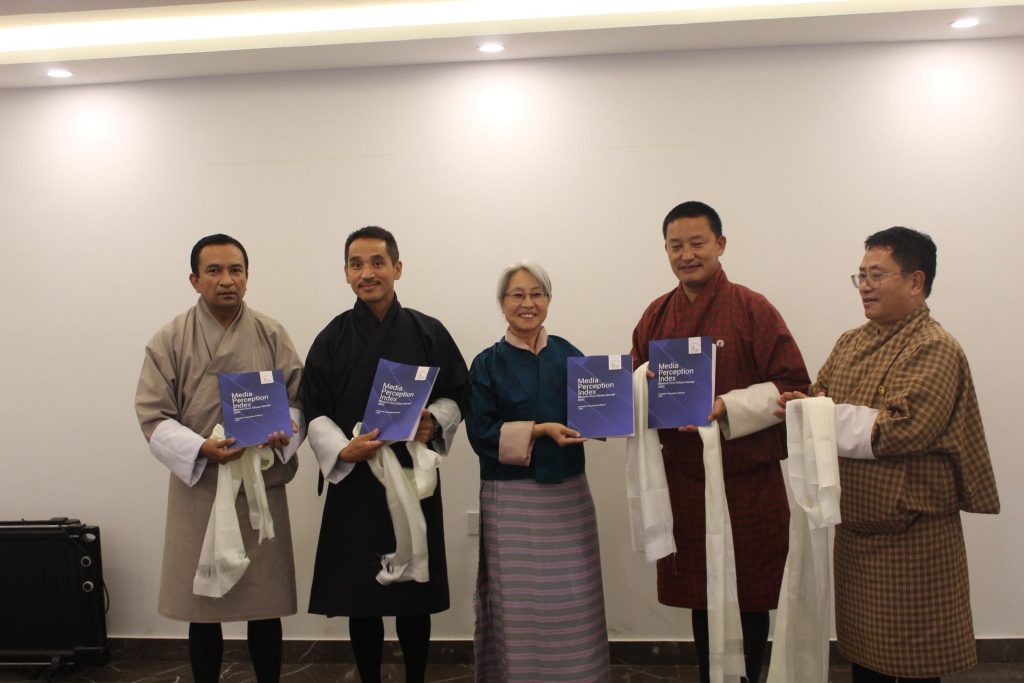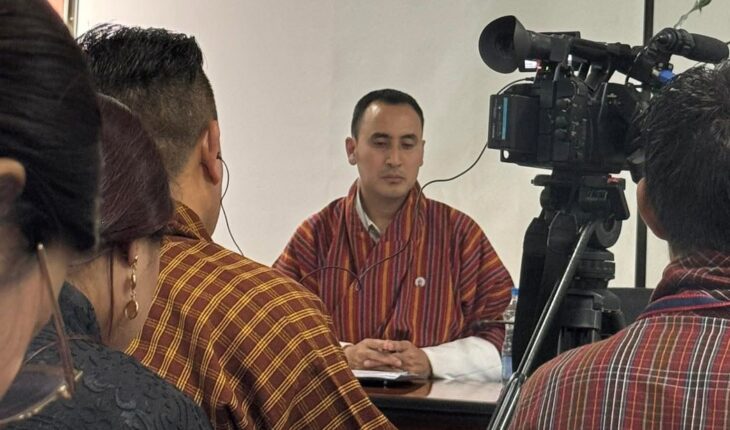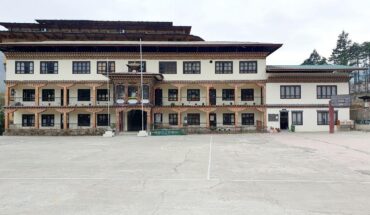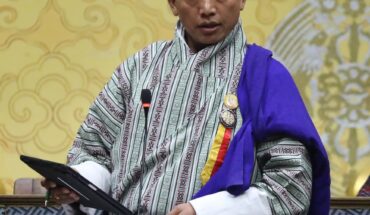
TIL BDR GHALLEY
Thimphu
A comprehensive survey of Bhutan’s media landscape and Media Perception Index conducted in 2025 has highlighted significant challenges in press freedom, professional capacity, and the financial sustainability of media houses.
Conducted by the Journalist Association of Bhutan (JAB) in collaboration with the Centre for Local Governance and Research, the study gathered responses from 703 participants across 14 dzongkhags.
The survey revealed that while 80 percent of registered journalists participated, a significant portion of the workforce is relatively inexperienced, with 38 percent of respondents new to the field and only 26.6 percent having three to ten years of experience.
Overall perceptions of media performance were concerning: 46.5 percent of journalists rated Bhutanese media as average, 42.3 percent as poor, and only 9.9 percent as good, indicating widespread dissatisfaction with the current state of journalism.
Regarding transparency and access to public information, the Prime Minister’s Office was considered relatively transparent, whereas institutions such as the Anti-Corruption Commission, Royal Audit Authority, and the judiciary were rated as average.
Despite these ratings, 84 percent of journalists reported persistent systemic barriers to obtaining public information, with access often influenced by personal networks, professional seniority, or perceived credibility.
Getting information still depends on who you know, rather than what you need to know.
Regulatory frameworks, including Rules for Administrative Disciplinary Actions (RADA) regulations, were cited as compounding these challenges.
Experts recommend the establishment of a transparent government-managed digital platform for information sharing, assignment of trained Public Information Officers (PIOs), annual government media dialogue forums, and capacity-building programs to improve journalists’ knowledge of information rights and networking.
The study additionally examined how ordinary citizens engage with media in an increasingly digital environment.
“While social media has surpassed traditional media in popularity, trust in it remains low. There is a big gap between how much people use social media and how much they trust it. Overall, people still trust television and newspapers more,” said Rinzin Wangchuk, the executive director of JAB.
Similarly, “we need to build trust and credibility of social media even as we try to support traditional media, adapt to new technologies and social media changes,” added Needrup Zangpo, chairperson of JAB.
The survey covered around 703 respondents across all regions to understand not only how people consume news but also how they feel about the Bhutanese media.
“This is the first time this kind of survey has been conducted. Moreover, now with digitization and social media, we also need to look into how relevant mainstream media remains in this changing environment of the media landscape, not only in Bhutan but throughout the world,” said Binod Pradhan, Chief Information and Media Officer with the Department of Media, Creative Industry and Intellectual Property (DoMCIIP).
Press freedom concerns ranked high among the challenges. A striking 80.4 percent of journalists admitted to self-censoring, largely due to fear of potential reprisal, legal consequences, or management disapproval.
Newsroom governance issues remain problematic, with many media owners acting as editors-in-chief — raising conflicts of interest. Furthermore, 69.1 percent of respondents viewed the 2023 dissolution of the independent media council negatively, emphasizing the need for reinstating an independent press council to uphold ethical standards, mediate disputes, and safeguard editorial independence.
Strengthening legal protection for journalists is widely regarded as essential to ensure a free and accountable press.
Economic sustainability of media houses also emerged as a pressing concern. Government austerity measures and declining traditional advertising revenues have increased reliance on subsidies through the Media Enterprise Development Board (MEDB).
The closure of regional bureaus, reduced staffing, and diminished local coverage have further constrained the media’s ability to provide comprehensive reporting.
Recommendations include establishing media endowment funds, exploring public-interest content grants from NGOs, revising media licensing and regulatory policies, and incentivising mergers or content-sharing alliances among outlets to consolidate resources, expand reach, and reduce operational costs.
The survey additionally examined how Bhutanese citizens engage with media. Traditional outlets such as BBS TV and radio remain highly trusted, while social media, despite being the most dominant source, is considered less reliable.
Print media continues to face challenges of accessibility and relevance.
Kuensel wide reach and the Bhutanese maintains a loyal readership, but other publications such as Business Bhutan, Bhutan Times, The Journalist, Bhutan Today, and Gyalchi Sarshog struggle with low visibility.
The study also highlighted the growing digital risks for children, signaling an urgent need for regulatory action and awareness campaigns.
The survey underscores that while Bhutanese media continues to retain public trust in selected traditional formats, structural, economic, and governance challenges are eroding journalistic independence and professional growth.
Enhancing access to information, restoring independent oversight, strengthening legal protections, and building long-term financial stability are critical to fostering a resilient, transparent, and citizen-focused media landscape in Bhutan.





